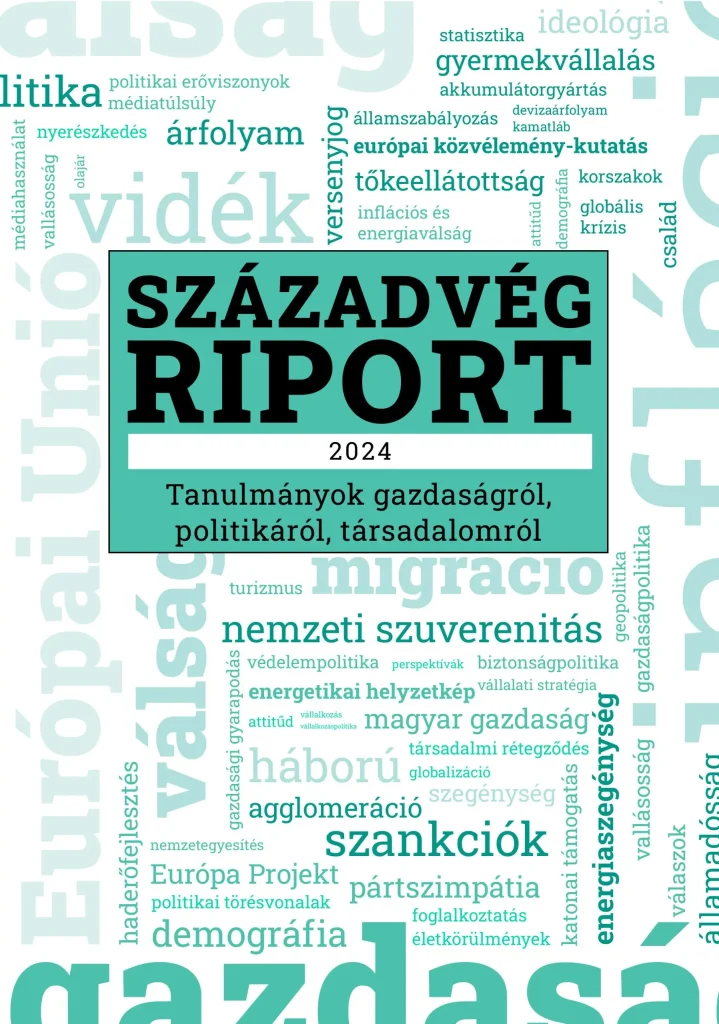Three sub-indices of the household prosperity index fell and one improved compared to the previous month, and, overall, the index weakened marginally compared to October. Employment continued to be the most positively assessed, with a decline from -0.4 in the previous month to -1.0. Households are most negative about inflation, with this indicator down 0.1 percentage points from October, from -85.8 to -85.9. The perception of the economic environment improved from -26.9 points in the previous month to -25.0, while that of the financial situation worsened from -17.1 to -17.3.
In the household survey, the greatest positive shift is that respondents think things are going in a better direction than last month. Indeed, when asked “Overall, do you think things are going in a rather good or rather bad direction in Hungary today?”, the percentage of respondents who said things are definitely going in a bad direction was 4.4 percentage points lower (30.1%) and the percentage of respondents who said things are going in a rather bad direction was 2.4 percentage points lower (20.0%) than a month ago. However, there was a marked increase (+5.2 percentage points) from October to November in the share of those who responded that some things were going in a good direction, while others were going in a bad direction (from 25.7% to 30.9%). The share of respondents who said things are going rather well was 0.8 percentage points higher (11.2% of respondents), while the share of respondents who said things are definitely going well was 0.2 percentage points higher (5.8% of respondents).
In November, the greatest negative shift among households was in the length of time it takes to find a new job after losing one. After 22.6% in October, the share of respondents saying they would immediately find a new job was 21.5% in November. After 37.3% in the previous month, the share of respondents saying they could find a new job in 3 months was 32.6% in November. At the same time, after 17.2% in October, the share of respondents saying they could find a new job in 3 to 6 months was 21.4% in November, up 4.2 percentage points. The share of respondents saying they could find a new job in 6 months to 1 year was 7.8%, up 0.7 percentage points, while the share of those saying they could find a new job in more than 1 year remained 7.8%. In conclusion, the average expected time to find a new job has increased from 3.4 months to 3.9 months.
The business survey showed an improvement in all four sub-indices. The economic environment index increased more significantly from -28.0 in the previous month to -23.7, the business environment index improved from -25.1 to -21.5, the industrial environment index improved from -9.4 to -6.9, while the production environment index improved less sharply, from -10.7 to -8.2.
Companies were most negative about the price evolution of their products over the past year. Indeed, based on the responses of the business leaders surveyed, the survey shows a clear slight fall in prices from October to November. After October, 0.6 percentage points fewer respondents said they had increased product prices by more than 7%, while 1.1 percentage points more respondents said they had increased product prices by less than 1%. Continuing this analysis, we find that the average decline in the increase in business product prices drives inflation in a favourable direction.
In November, the most positive change for businesses was in terms of raising funds for development. More respondents said it was not difficult, with 20.7% (4.3 percentage points more) saying it was not difficult at all, and 26.6% (1.4 percentage points more) said it was rather not difficult for businesses to raise funds for development.28.6% of the surveyed businesses (0.1 percentage points less) said it was rather difficult, while 19.5% (4.1 percentage points more) said it was completely difficult.
The purpose of the prosperity survey conducted by Századvég Konjunktúrakutató is to provide information to decision-makers and analysts on current and near-term economic developments. Since August 2019, our Institute has been producing the business and consumer prosperity index on a monthly basis. Our monthly survey asks 1,000 business leaders and 1,000 adult residents about their assessment of the economic situation and their expectations. For the two groups, we ask 29 and 28 questions respectively, covering a wide range of economic life. Among the responses received, positive ones (e.g. expected economic improvement) are given a positive score, while negative ones (expected decrease in employment) are given a negative score. The scores are then averaged and converted to a scale between -100 and +100 to obtain the prosperity indices. Thus, the higher the value of the prosperity indices, the more positive households’ and companies’ perception of the economy is. In addition, for both the household and the business survey, 4 sub-indices are constructed using a subset of the questions to illustrate the evolution of economic sentiment in a particular area.
